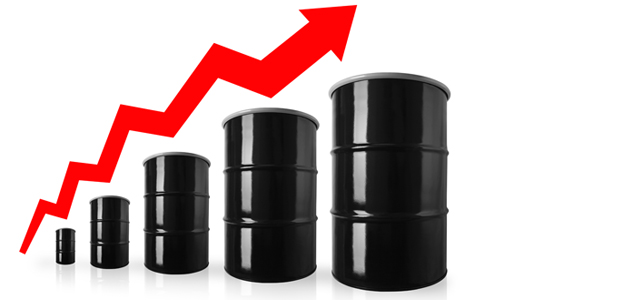
Hedging Update
Independents Lock In Positions On 2018 Production
HOUSTON–Nodding to increased investor pressure to deliver cash flow neutrality and stronger corporate returns, North American exploration, drilling and production companies were more hedged than usual as they entered 2018, indicates research from IHS Markit.
According to the IHS Markit Comparative Peer Group Analysis of North American E&Ps, the group of 43 companies studied had hedged 25 percent of 2018 oil production, or 1.37 million barrels a day, at $53.40 a barrel at the end of third quarter 2017. The group also had hedged 36 percent of gas production, or 12.37 billion cubic feet a day, at $3.13 an Mcf. This is an increase from the end of the second quarter, when the companies only had 12 percent of oil and 31 percent of gas production hedged for 2018. IHS says companies took advantage of the initial oil price rally when it hit the low $50-a-barrel range.
Paul O’Donnell, principal energy analyst at IHS Markit and author of the new report, says the findings signal that investors’ emphasis on profitability has not fallen on deaf ears. To the contrary, many producers that have long awaited stronger commodity prices have taken advantage of the opportunity to exert more control over their future revenues.
“The North American peer group of operating companies is more hedged for 2018 than for comparable periods at this time in previous years, which suggests a shift in strategy,” O’Donnell reasons. “Companies are seeking more predictable cash flows because of greater investor demands to improve corporate returns and keep capital spending within cash flow.”
Companies’ desire for healthy balance sheets seems to influence their 2018 hedging positions more than any desire to expand production, he continues, suggesting that bottom-line performance matters more than output totals. “The higher level of hedging is less about supporting aggressive production growth and more about increasing investor confidence that these companies are serious about becoming more financially disciplined,” O’Donnell assesses.
The IHS Markit report indicates the small and midsized U.S. producer subgroups had hedged 49 percent of total 2018 production at the end of third quarter 2017, compared with 18 percent for the large North American producer subgroup.
Speaking in late January, O’Donnell noted that the oil price rally to the mid-$60s offered companies a chance to expand their hedging positions at prices capable of generating positive returns. “We expect North American companies will report significant increases to hedge books during the fourth-quarter 2017 earnings cycle, particularly the non-Permian Basin focused and large operators that have previously been less hedged,” he indicated.
Good Timing
More wells are economic at $50 a barrel, O’Donnell points out, and with oil prices breaking $60/bbl, it makes sense for companies to hedge more than they had in the past three years after oil prices turned from historic highs to historic lows.
“Companies are opting to lock in a larger portion of production and cash flows, which helps with capital budgeting for the upcoming period,” he points out. “Again, the focus now for operators is on capital discipline and keeping capital expenditures within cash flows to satisfy the growing investor focus on returns, rather than chasing volume growth.”
According to the analysis, the subgroup of Permian Basin producers had hedged 63 percent of 2018 oil production at the end of third quarter 2017, a sharp increase from 36 percent at the end of the second quarter. Even so, it says, they are likely to record hedging losses given the average strike price of $53.14 a barrel. IHS Markit observes that the group’s average oil strike price has so far been below West Texas Intermediate oil prices, which averaged more than $55 a barrel in the fourth quarter 2017 and climbed as high as the mid-$60s in early 2018.
Meanwhile, the report finds, the Appalachian Basin subgroup had hedged 49 percent of 2018 gas production at $3.33 an Mcf at the end of third quarter 2017. This is a healthy premium to the sub-$3.00/Mcf futures prices that have characterized much of 2018, it notes. The percentage of gas production hedged was up from the end of the second quarter, when the group had 44 percent of 2018 gas production hedged at $3.36 an Mcf.
At the end of the third quarter, the report says, the producers peer group also had hedged 34 percent of fourth-quarter 2017 oil production at $52.97 a barrel, and 49 percent of fourth-quarter 2017 natural gas production at $3.21 an Mcf. Given that fourth-quarter 2017 WTI prices averaged more than $55 a barrel, IHS Markit analysts say they expect companies will report realized hedging losses for the quarter.
For other great articles about exploration, drilling, completions and production, subscribe to The American Oil & Gas Reporter and bookmark www.aogr.com.













